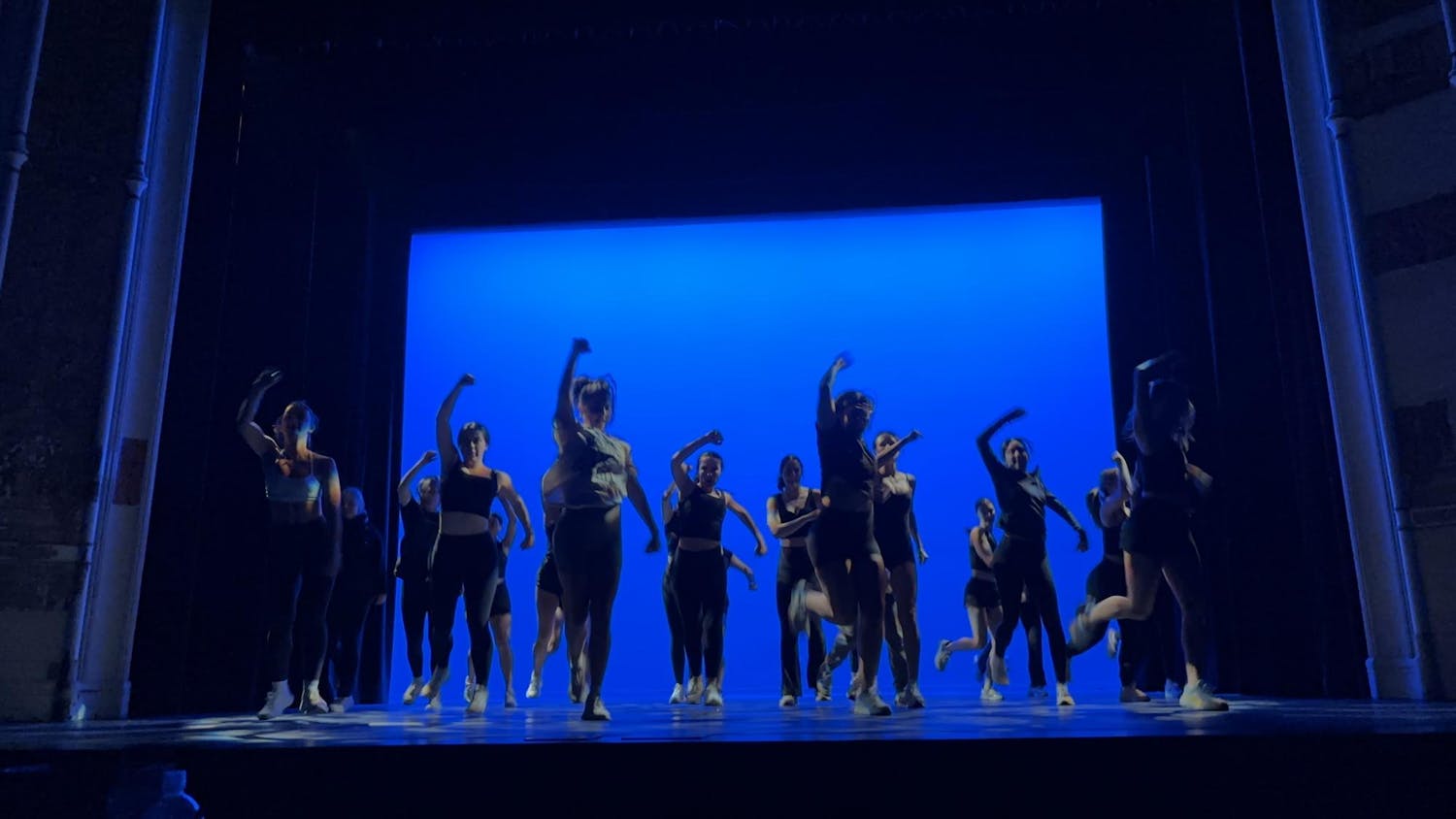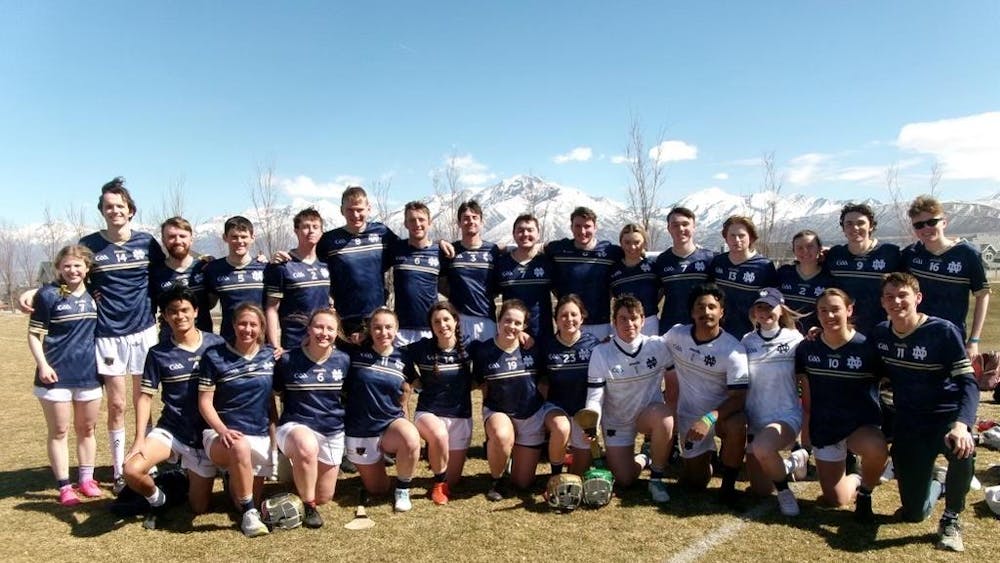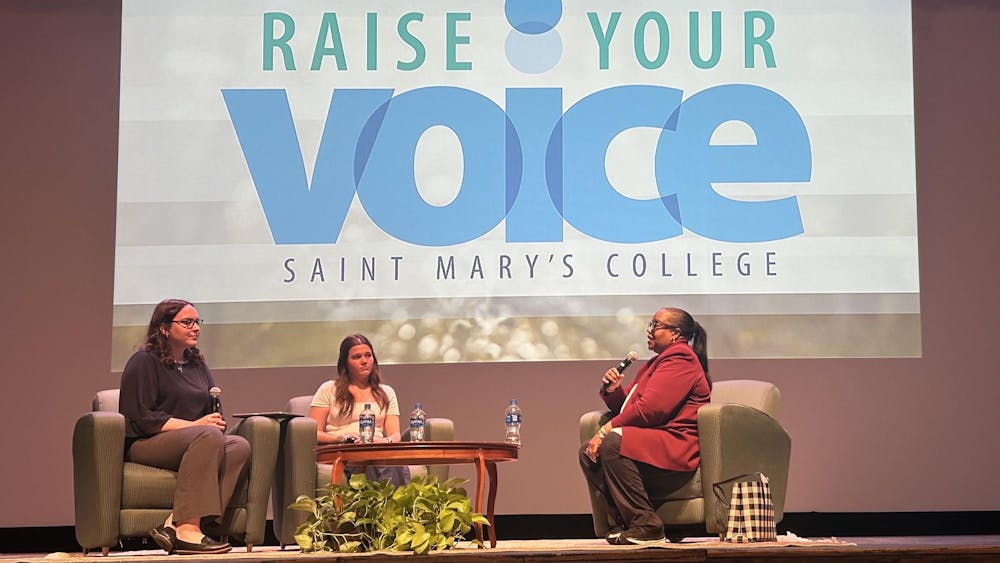The controversial removal of the University of Illinois' American Indian mascot served as the foundation for a discussion on free expression, hate and discrimination at a lecture Monday.
The talk, "Curating Beyond the Chief: Hating Art and Words in Public," took place at the Hesburgh Center for International Studies.

The controversy over the long-held "Chief" mascot climaxed in 2007 when the university retired the mascot in response to pressures from a National Collegiate Athletic Association rule.
But Professor Robert Warrior, director of Native American Studies at the University of Illinois at Urbana-Champaign, said this removal came much too late. Many other universities had begun removal of native mascots as early as the 1980s, he said.
The growing tension over the mascot debate on campus led Warrior to begin planning an on-campus exhibit with artist Edgar Heap of Birds, renowned especially for his work with Native American themes and social commentary.
"Campus climate was growing more intolerant of difference because of the controversy," Warrior said.
Warrior asked Heap of Birds to bring his work to campus, which included a series of signs that commemorated the indigenous people who previously held the land.
The project began with a dialogue between Warrior, Heap of Birds, students and faculty over what would be the most effective way to make a statement about the Native issue on campus. Through this dialogue, Warrior said he realized it was not only necessary to make a statement, but also to be informative to themselves and the rest of the campus community through the project.

"We recognized in our discussion how little we knew about these people," he said.
The exhibit, entitled "Beyond the Chief," read "Fighting Illini: Today Your Host is..." followed by the name of one of the native tribes that used to inhabit the state.
After the exhibit's installation, the signs were vandalized, bent and even stolen, Warrior said.
In response to the vandalization and thefts, Heap of Birds returned to the campus to have a dialogue about the issue. The Community Relations Service (CRS), a division of the Department of Justice also became involved, as the acts were deemed hate crimes since they targeted the Native American community.
"The CRS was concerned about escalation," Warrior said.
Heap of Bird and the Department of Justice's efforts proved insufficient to end the vandalism, as signs continued to be damaged, resulting in a new design for the exhibit, believed to be less easily damaged.
"The new signs, fabricated in the style of highway signs and under 24/7 surveillance, seemed to stop the vandalism," Warrior said.
The vandalism, Warrior said, was caused by individuals' disapproval and discomfort with a discussion of Native American issues, and a widespread problem of white privilege.
Warrior said the simple presence of an exhibit dealing with Native American heritage sparked controversy and violent acts on campus.
"White supremacy, white privilege, and racism ... I see as systemic and pervasive," he said.
With regard to the continued movement for the removal of Native-caricature mascots on other college campuses, Warrior said the movements should be equally broad.
"Things really work best when there's some kind of grass roots effort," he said.












